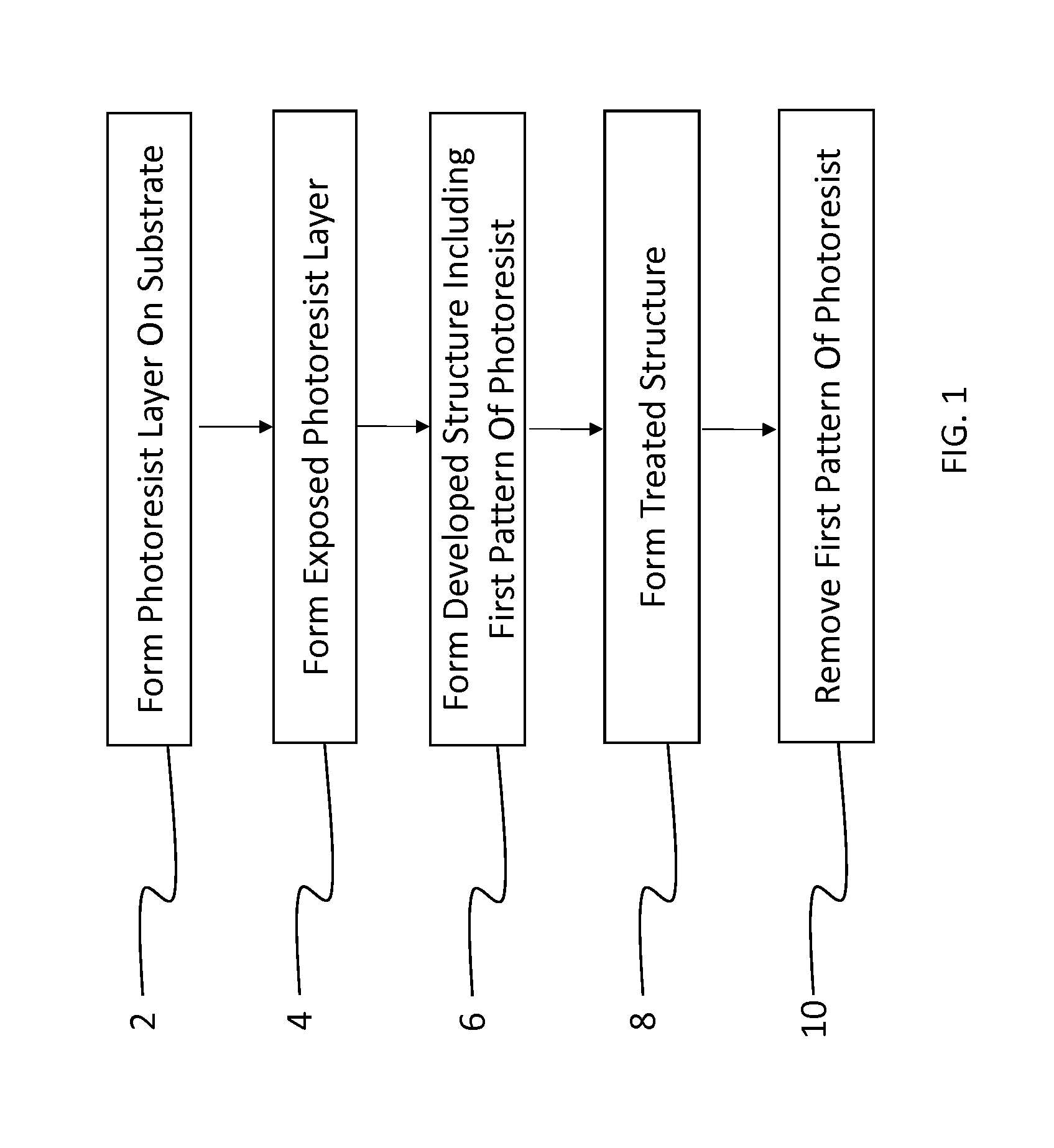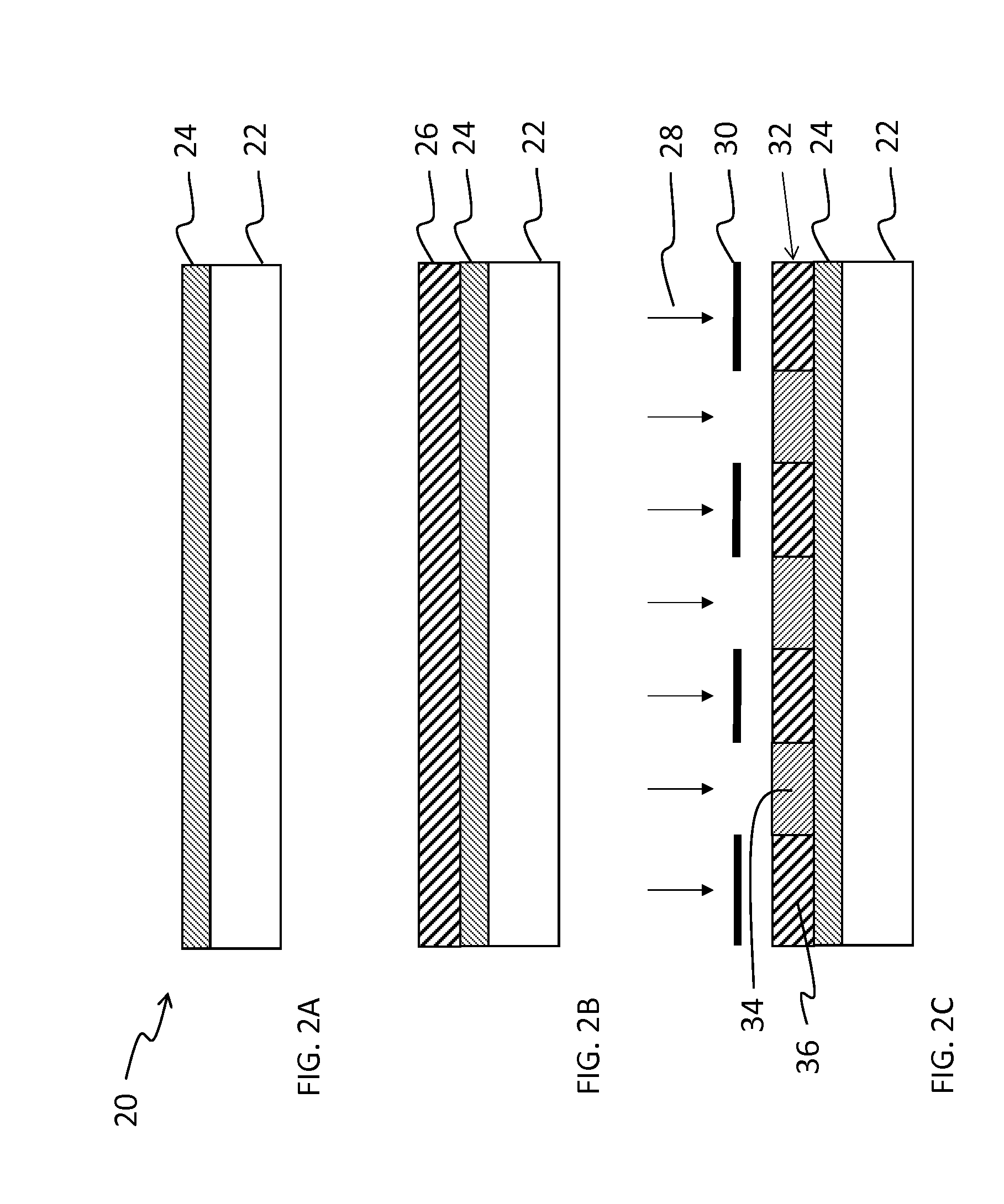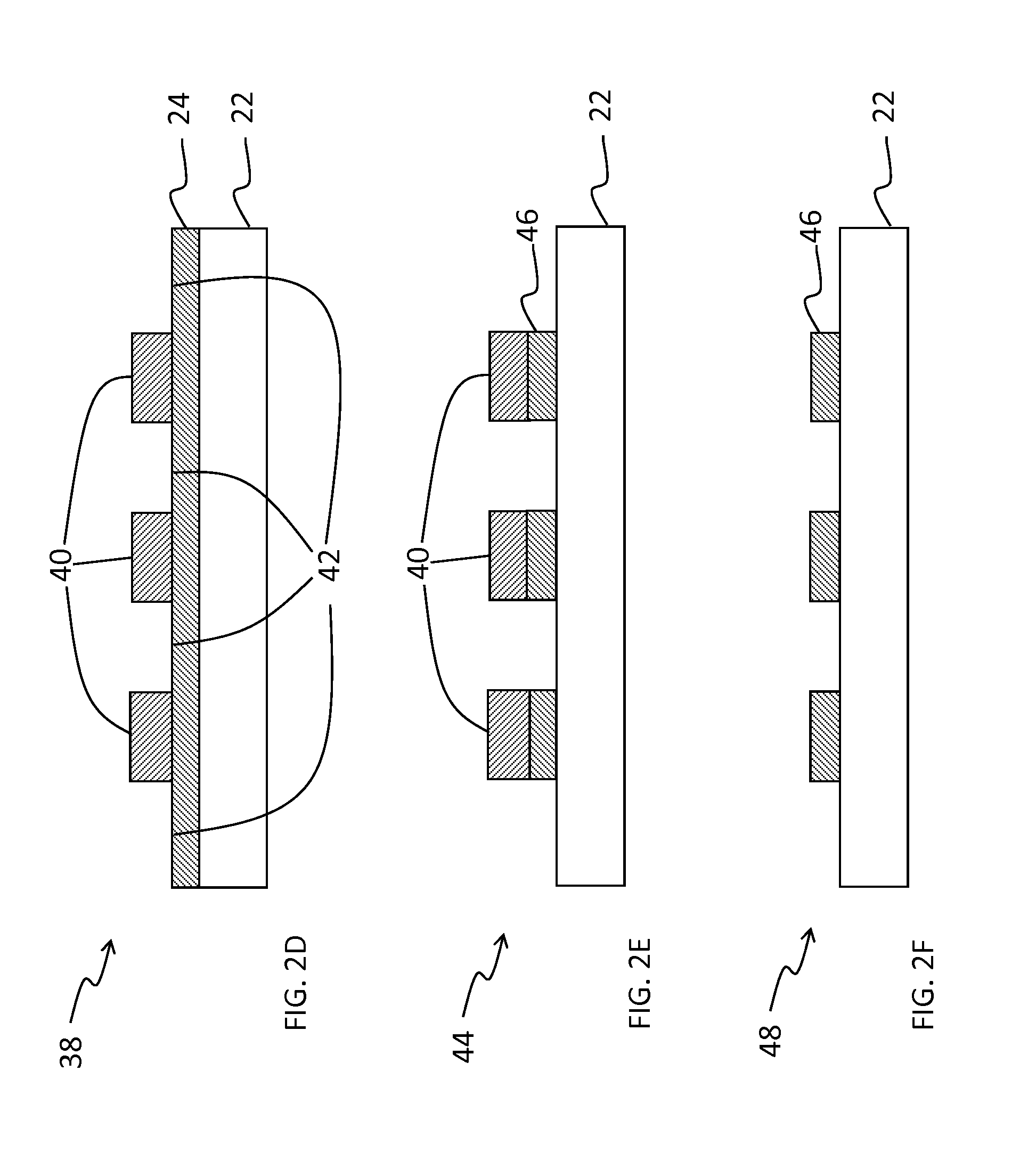Fluorinated photopolymer with integrated anthracene sensitizer
a fluorinated photopolymer and sensitizer technology, applied in the field of fluorinated photopolymers, can solve the problems of reducing the resistance of organic materials to solvents, hindering the development of devices based on these materials, and reducing the use of conventional lithographic solvents and processes, so as to improve light sensitivity, reduce light exposure, and reduce exposure energy
- Summary
- Abstract
- Description
- Claims
- Application Information
AI Technical Summary
Benefits of technology
Problems solved by technology
Method used
Image
Examples
embodiment 1
[0064]A composition comprising: a fluorinated solvent; and a fluorinated photopolymer comprising at least three distinct repeating units, including a first repeating unit having a fluorine-containing group, a second repeating unit having an acid- or alcohol-forming precursor group, and a third repeating unit having an anthracene-based sensitizing dye, wherein the photopolymer has a total fluorine content in a range of 15 to 60% by weight.
embodiment 2
[0065]The composition according to embodiment 1 wherein the photopolymer is a copolymer formed from a first monomer having a fluorine-containing group, a second monomer having an acid- or alcohol-forming precursor group, and a third monomer having a structure according to formula (3):
wherein A represents a moiety having a polymerizable group and R1 through R9 independently represent a hydrogen atom, a halogen atom, a cyano group, or a substituted or unsubstituted alkyl, alkoxy, alkylthio, aryl, aryloxy, amino, alkanoate, benzoate, alkyl ester, aryl ester, alkanone or monovalent heterocyclic group.
embodiment 3
[0066]The composition according to embodiment 2 wherein the structure comprises at least one fluorine atom.
PUM
| Property | Measurement | Unit |
|---|---|---|
| thick | aaaaa | aaaaa |
| total stripping time | aaaaa | aaaaa |
| volume | aaaaa | aaaaa |
Abstract
Description
Claims
Application Information
 Login to View More
Login to View More - R&D
- Intellectual Property
- Life Sciences
- Materials
- Tech Scout
- Unparalleled Data Quality
- Higher Quality Content
- 60% Fewer Hallucinations
Browse by: Latest US Patents, China's latest patents, Technical Efficacy Thesaurus, Application Domain, Technology Topic, Popular Technical Reports.
© 2025 PatSnap. All rights reserved.Legal|Privacy policy|Modern Slavery Act Transparency Statement|Sitemap|About US| Contact US: help@patsnap.com



